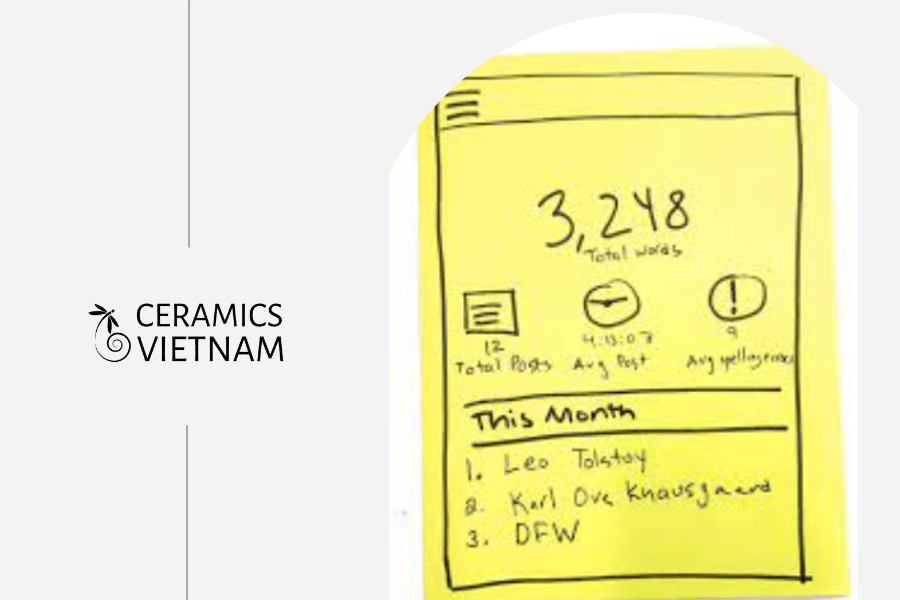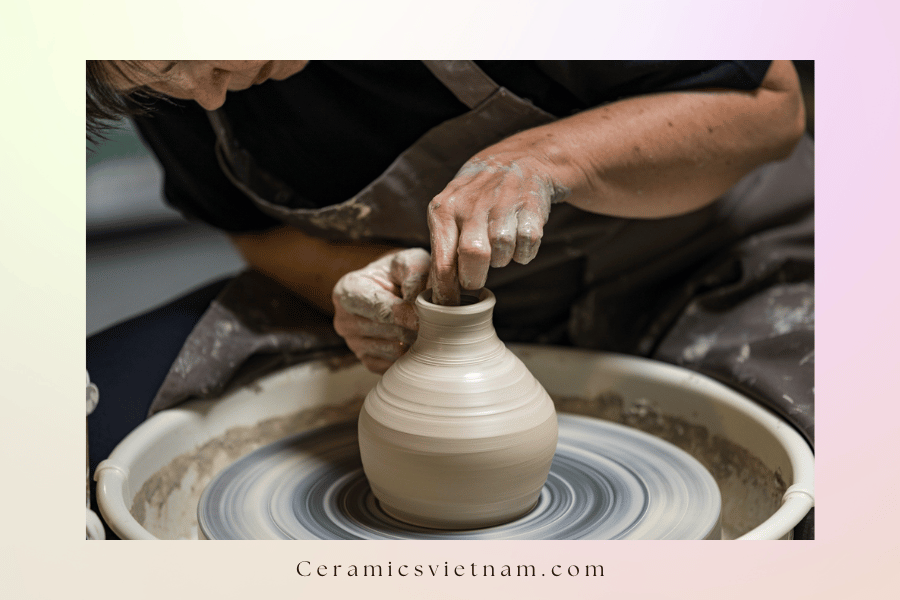Have you heard the classic tale of the ceramics teacher? In one semester, the instructor divided the class into two groups. The first group was tasked with producing as many pots as possible, emphasizing quantity over everything else. On the other hand, the second group focused solely on creating one perfect pot, prioritizing quality above all.
Now, you might be curious about which group achieved better grades. Surprisingly, it was the quantity group that excelled in terms of quality. The underlying theory is quite profound: the act of playful experimentation, investing time, and continuous learning inevitably leads to the development of exceptional quality in the final output.
Unraveling the Writing Process: Bridging the Gap Between Intentions and Action

Vietnamese ceramics How design is like writing is like ceramics
If you’re familiar with the writing process, the following words might ring a bell. Numerous aphorisms exist on this subject, such as the one by Anna Enright:
“The way to write a book is to actually write a book. A pen is useful, typing is also good. Keep putting words on the page.” Anna Enright
At Medium, we’ve dedicated considerable time to pondering over this matter: what motivates people to write, or conversely, what hinders them from doing so. Our investigation has taken various angles, including behavioral data, one-on-one interviews, and surveys. We discovered that a significant reported obstacle was the perceived lack of “time” for writing.
However, the truth is that “time” is rarely the sole reason behind not pursuing a goal. It’s usually an intricate interplay of multiple factors. As one writer candidly expressed, the reasons for not starting her writing projects were:
“Inertia; resistance; a lack of time. I am, after all, a new mom with a 25 hour a week job and a ton of excuses.”
Another writer added:
“I never really have time to write. And then when I do, I forget to write.”
Similar to endeavors like adopting a healthier diet, exercising regularly, or limiting internet use at appropriate hours, there exists a considerable gap between intention and action.
Just as in creating perfect pots, the primary and most crucial step in making progress in writing appears to be taking it one step at a time and being willing to try different approaches
Enhancing Writing Habits: Subtle Nudges and Encouragement in Design

Vietnamese ceramics How design is like writing is like ceramics
In the design process, a similar point recently emerged, and it sparked a brainstorming session between Marcin Wichary, a remarkable designer/writer, and myself, after some initial research.
During our discussions, we discovered that qualitative research often revealed people setting explicit goals for themselves, such as “write every week,” but follow-up actions were lacking.
To address this, we pondered on integrating intention directly into the product. Our initial excitement led us to consider a multi-pronged approach. We toyed with the idea of asking users about their writing goals, hopes, and dreams, and then regularly checking in with them. Additionally, we envisioned applauding their achievements for every character count milestone. We even thought about suggesting they wrap up the drafts they had made the most progress on.
However, as the project seemed quite substantial and time constraints were pressing, we grew a bit disheartened. But we didn’t abandon the idea entirely. Instead, we shifted our focus to a more immediate and lightweight approach that could encourage writing, particularly for those who had written before.
Amidst brainstorming various ideas, we honed in on the Stats page as a potential solution. We contemplated displaying to writers the months in which they had written more and whether they were keeping up with their writing in the current month.
This simple feature could serve as a subtle nudge, reminding users of their past achievements and reinforcing the belief that they could do it again. “I did this before! I can do it again.” Such encouragement could be a powerful motivator to inspire more writing activity
An enormous advantage was that it avoided being annoying. Unlike yet another email that bombarded the user with reminders about not exercising enough or not consuming sufficient vegetables or maintaining a moderately moral compass, this approach focused on showing rather than telling.
Marcin swiftly implemented the feature, and it went live in no time.
Admittedly, it may seem like a minuscule addition, but its impact can accumulate over time, particularly when combined with other elements. One writer shared their positive experience, stating:
“I really like this. Lately, I’ve been trying to write every Sunday, but it’s been challenging. With this current cadence of writing once-ish per week, it might help me break free from the ‘I have to write on Sunday’ mindset and encourage me to write on other days as well.”
Another writer exclaimed:
“When I noticed the change on the stats page yesterday, I looked back and realized how productive I was in July and August. It significantly boosted my self-esteem. It’s fascinating how small things can make a big difference!”
Of course, enthusiasm is only part of the equation, and it’s crucial to consider the overall design holistically. Nevertheless, it feels gratifying to have one aspect sorted, even if it’s small and imperfect.














Leave a reply